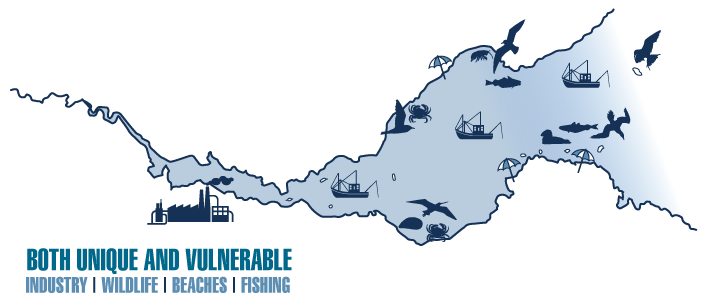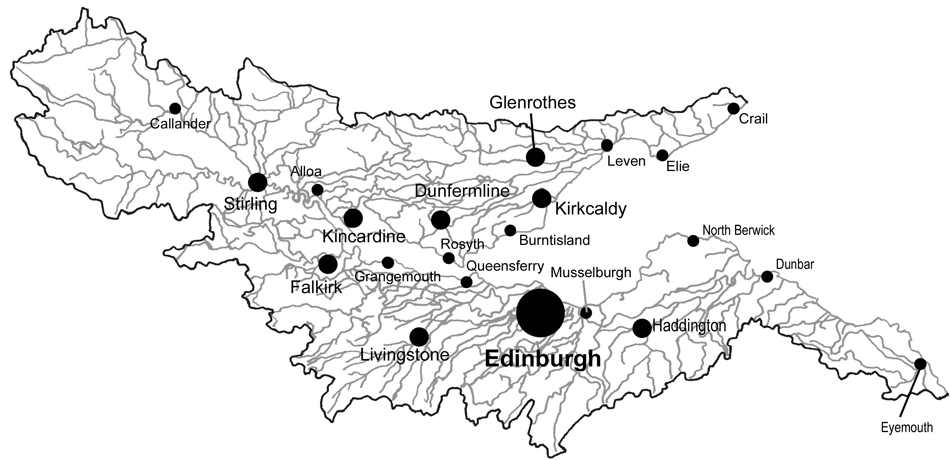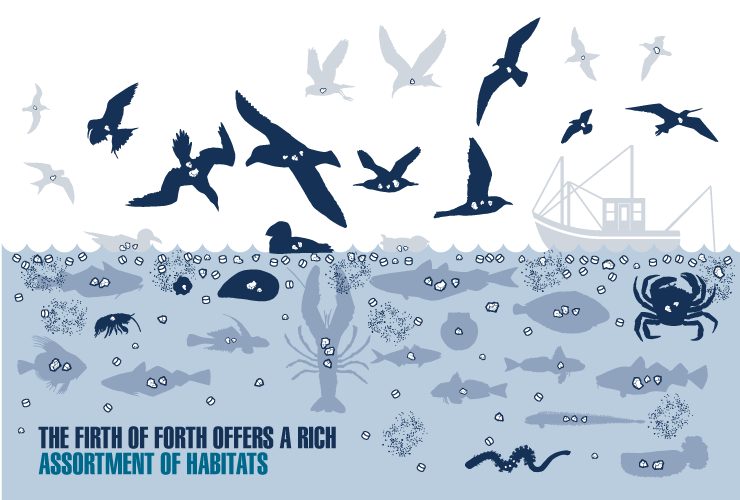The Forth at Risk
Both unique and vulnerable the Firth of Forth is a treasured asset and inspirational landscape. It is a place where industry and wildlife, sandy beaches and mudflats, ancient fishing villages and Scotland's capital city come together.
Image Credit: Fidra

Fidra set up The Great Nurdle Hunt in 2014 to address the presence of plastic pellets (or nurdles) washing up along the shores of East Lothian, Scotland, where Fidra's office is based.
This case study pulls together some of the understanding that was built during the development and research of the project. It outlines some of the drivers and impacts of nurdle pollution in this local environment, and highlights the reasons for focussing on the prevention of this form of pollution at source.
Stretching from the tidal limit at Stirling past the petrochemical complexes at Grangemouth, under the iconic rail bridge and past Edinburgh to the wide estuary mouth between Dunbar and Fife Ness, the Firth of Forth covers an area of almost 650sq miles. A quarter of Scotland's population lives along its shores and every year millions of marine animals make it their home.
Sadly, like on many beaches in Scotland, nurdles are washing up on the Forth's unique coast line in worryingly large numbers.
Image Credit: Fidra

Toxins
For hundreds of years the Firth of Forth and the streams and rivers feeding it have been exposed to heavy industrial pollution. A succession of water quality regulations means that the Forth is now much cleaner than it has been for generations. However some of the harmful substances used in industries like chemical manufacture, paper mills, dye works, agriculture, mining, construction and oil refining do not break down easily in the environment and so have left a permanent legacy.
These harmful industrial chemicals known as 'Persistent Bioaccumulating Toxins' (PBTs) can accumulate in animal and human tissue causing long term damage. Although lots of PBTs are now banned many can still be found in the sediment and water in the Forth.
In the marine environment plastics attract and absorb PBTs and can concentrate them to levels millions of times higher than in the surrounding water. A sample of nurdles collected in the Firth of Forth has been scientifically analysed for a variety of these chemicals, the results show significant levels of DDTs and PCBs and extremely high levels of PAHs (Polycyclic aromatic hydrocarbons).
To see how these results from the Forth compare globally please follow this link to the International Pellet Watch website
Wildlife and fishing threatened
|
Scientists have found many of the animals living on the Forth mistake plastic for food. Postmortems of gulls, fulmars, terns and puffins have found nurdles in their stomachs. Underwater shellfish and filter feeders are some of the marine animals most susceptible to plastic pollution at a microscopic level. Every year millions of marine animals and seabirds make the Firth of Forth their home. A rich assortment of habitats means that most of the coastline and the islands are legally protected by national and international wildlife designations. |
|
Fishing villages' line the banks of the Firth of Forth and the small-scale, inshore shellfish fisheries rely on a healthy ecosystem to support their catch. With no way of removing nurdles and other microplastics it is essential that we must work to stop this pollution at source and across the entire supply chain. Above are a number of animals which live in the Firth of Forth known to ingest plastics
|
